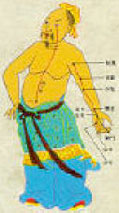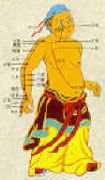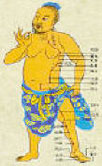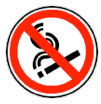Acupuncture
What is Acupuncture?
 Acupuncture, simply stated, is a health science which is used to successfully treat both pain and dysfunction in the body.
Acupuncture, simply stated, is a health science which is used to successfully treat both pain and dysfunction in the body.
Acupuncture has its roots deeply planted in China. In fact, authorities agree the science is between 5,000 and 7,000 years old. Its use spread throughout ancient Egypt, the Middle East, the Roman Empire and later into Western Europe as merchants and missionaries to China told of the amazing discoveries the people of the Orient had developed. Acupuncture did not become known on a national level in the US until 1971 when diplomatic relations between China and America were relaxed.
Early Chinese physicians discovered there is an energy network traversing just below the surface of the skin which communicates from the exterior to the internal organs and structures over 1,000 “Acupoints” on the body. This energy works in harmony with the body’s circulatory, nervous, muscular, digestive, genitourinary and all other systems of the body. When this vital energy becomes blocked or weakened, an effect in a body system or anatomic location becomes evident. Stimulation of one or a combination of key “Acupoints” on the body may restore harmony to the affected area.
Historians have stated, “More people have benefited from Acupuncture over the course of 50 centuries than the combined total of all other healing sciences, both ancient and modern.”
How Does it Work?
 Far too often in the medical professions, a patient is told after extensive examination, “There is nothing wrong,” “It is all in your head,” or “Sorry, you’ll have to learn to live with it.” The examining doctor unable to find the cause of the problem has little else to tell the patient. Fortunately, many physicians are now referring their patients for Acupuncture.
Far too often in the medical professions, a patient is told after extensive examination, “There is nothing wrong,” “It is all in your head,” or “Sorry, you’ll have to learn to live with it.” The examining doctor unable to find the cause of the problem has little else to tell the patient. Fortunately, many physicians are now referring their patients for Acupuncture.
The human body’s energy flow courses over 12 meridians or channels that are normally well balanced. If a disruption of energy flow exists, it can alter the entire system, producing pain or symptoms in the body.
If we were to compare a 175 pound man on one end of a seesaw and a 47 pound child on the other end, it becomes obvious the seesaw would be “broken” due to the fact the heavier person would be sitting on the ground and lighter would be dangling in the air. Even though the seesaw is producing a symptom of being broken-extensive examination would not reveal anything wrong with the seesaw. The obvious answer is in the balance. Correction of the balance corrects the problem.
This is Acupuncture’s goal-to restore normalcy to the body’s energy balance by utilizing a combination of Acupoints located on the 12 meridians. This is accomplished by a variety of means, the needle is just one.
Medical research continues in this country and others to attempt to explain in western scientific terms what the ancient Chinese 70 centuries earlier described. Today, many theories have been postulated as to why Acupuncture is so effective in pain control. However, as more discoveries are made, more research is indicated.
Is Treatment Painful?
 One would assume inserting a needle into the skin would be painful since most of us can relate to being stuck with a pin or having a hypodermic injection. However, 4 Acupuncture needles can easily be inserted into the hollow tube of a hypodermic needle. Because of the extreme slenderness of the needle, most people compare the sensations to “less than a mosquito bite.” A phenomena referred to as “TEHCHI” occurs when the energy is contacted. This sensation is felt as a mild to moderate heaviness or tingling.
One would assume inserting a needle into the skin would be painful since most of us can relate to being stuck with a pin or having a hypodermic injection. However, 4 Acupuncture needles can easily be inserted into the hollow tube of a hypodermic needle. Because of the extreme slenderness of the needle, most people compare the sensations to “less than a mosquito bite.” A phenomena referred to as “TEHCHI” occurs when the energy is contacted. This sensation is felt as a mild to moderate heaviness or tingling.
Needles obviously have their place in clinical practice. However, many physicians certified in Acupuncture and licensed Acupuncturists are employing electronic and laser stimulation to the Acupoint with equal effectiveness. Both of these procedures are painless and are quickly becoming standard worldwide.
The tapping needle “teishein: is not really a needle as it does not pierce the skin. It produces a mild to moderate sensation. Compare it to taping a ball point pen on the skin. This form of stimulation has been used successfully for centuries.
How Many Treatments are Usual?
 Obviously the number of treatments vary with different conditions and individuals. Chronic problems generally require more treatment than acute ones. Some patients notice an immediate improvement after the 1st treatment, whereas others many not notice any effect until the 7th or 8th visit. It’s been shown that a certain percentage of patients receive maximum benefit up to 3 months following a course of therapy.
Obviously the number of treatments vary with different conditions and individuals. Chronic problems generally require more treatment than acute ones. Some patients notice an immediate improvement after the 1st treatment, whereas others many not notice any effect until the 7th or 8th visit. It’s been shown that a certain percentage of patients receive maximum benefit up to 3 months following a course of therapy.
A small number of patient will receive a worsening of symptoms, as the body’s energies are returning to normal. This is usual and no need for alarm. It is followed by improvement. Researchers internationally agree the usual number of treatments is between 10 and 15. Patients are usually seen 2-3 times per week.
Patients are urged not to enter an Acupuncture program with the thought of “taking a few” to see what will happen. You may see results after 1 or 2 treatments, but a program of 10 to 12 treatments is usually needed. Remember your problem usually didn’t happen over night nor will it go away over night. Be patient…acupuncture works!!
Are Results Psychological?
 Many critics of Acupuncture have suggested the science is hypnosis or “mind over matter.” This criticism is totally unfounded as Acupuncture has startling effects in infants and toddlers as well as veterinary applications. The effect it has in surgery as an anesthetic further disclaims the skeptics. Even total disbelieves report favorable response to Acupuncture.
Many critics of Acupuncture have suggested the science is hypnosis or “mind over matter.” This criticism is totally unfounded as Acupuncture has startling effects in infants and toddlers as well as veterinary applications. The effect it has in surgery as an anesthetic further disclaims the skeptics. Even total disbelieves report favorable response to Acupuncture.
However, a positive outlook is obviously beneficial in all phases of life to include healing.
What Conditions Are Accepted?
 Acupuncture textbooks list well over 100 different conditions that respond well to Acupuncture. The World Health Organization, working in close harmony with the International Acupuncture training center of the Shanghai College of Traditional Chinese Medicine, has indicated Acupuncture is effective in the following conditions.
Acupuncture textbooks list well over 100 different conditions that respond well to Acupuncture. The World Health Organization, working in close harmony with the International Acupuncture training center of the Shanghai College of Traditional Chinese Medicine, has indicated Acupuncture is effective in the following conditions.
Acute and chronic pain, migraine, tension cluster and sinus headaches, trigeminal neuralgia, bladder dysfunction, bed wetting, neck, and low-back pain, shoulder problems, tennis elbow, post-operative pain relief, gastric problems, asthma, allergies, skin conditions, hemorrhoids, abnormal blood pressure, fatigue, anxiety, neurologic syndrome, and various eye problems.
This is only a partial list of the numerous conditions Acupuncture has been credited with helping.
Addiction Control
 Acupuncture has gained a great deal of notoriety in recent years concerning its considerable success with addiction control. It has been shown that Acupuncture has a very positive effect in the area of both drug and alcohol addiction. This procedure, in conjunction with professional counseling, has been proven extremely effective.
Acupuncture has gained a great deal of notoriety in recent years concerning its considerable success with addiction control. It has been shown that Acupuncture has a very positive effect in the area of both drug and alcohol addiction. This procedure, in conjunction with professional counseling, has been proven extremely effective.
One of the most noteworthy addictions Acupuncture helps is smoking. The average patient will reduce their intake by at least 1/2 within 24 hours of the 1st treatment. Several additional treatments generally allow the patient to stop without experiencing the negative side effects of quitting. Acupuncture also has a favorable effect in weight control. Currently there are several clinics in the US devoted solely to drug and alcohol rehabilitation.
